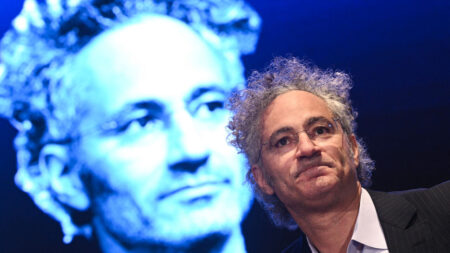Two years ago, there was a widespread belief that a major bubble was on the verge of bursting. The era of historically low interest rates was ending, causing turmoil in various asset classes. Share prices were plummeting, government bonds were taking a hit, and the cryptocurrency markets were in a state of freefall. On Wall Street, the naysayers were reveling in the chaos, as their predictions of doom seemed to be coming true. The prevailing sentiment of the previous decade, which suggested that inflation was a thing of the past and cheap money was here to stay, now seemed absurd in the face of the unfolding crisis.
As this paradigm shift loomed ever closer, the mood was shifting from excitement to doubt, from risk-taking to cautiousness, and from greed to fear. The process of this transition was expected to be long and arduous, with significant implications for the global economy as a whole. The trajectory of the market was about to undergo a dramatic reversal, with unknown consequences for investors and institutions alike.
In the midst of this uncertainty, it was clear that a new era was dawning. The traditional rules of finance and investing were being upended, and long-standing assumptions were being challenged. As the dust settled and the markets recalibrated, it became increasingly apparent that a new normal was emerging. This new normal would be characterized by greater volatility, heightened risk aversion, and a general sense of unease among market participants.
In the wake of these developments, investors and analysts alike were forced to reevaluate their strategies and assumptions. The tried-and-true methods of the past were no longer sufficient to navigate the increasingly treacherous waters of the financial markets. As a result, a new breed of investor began to emerge, one that was more attuned to the complexities and uncertainties of the modern economy.
Despite the challenges that lay ahead, there was a sense of cautious optimism in the air. While the road ahead was fraught with pitfalls and dangers, there was also a sense of opportunity and potential for those willing to take the risk. As the old adage goes, fortune favors the bold, and those who were willing to think outside the box and embrace new ideas stood to gain the most in the uncertain times ahead.
As the global economy teetered on the brink of a new era, it was clear that the only constant was change. The old certainties of the past were giving way to a new reality, one that was fraught with uncertainty and unpredictability. In this brave new world, adaptability and agility would be key traits for success, as those who were able to pivot and adjust to the evolving landscape would be best positioned to thrive in the tumultuous times ahead.
In conclusion, the events of two years ago marked a turning point in the financial markets, as a long period of stability and prosperity gave way to a new era of volatility and uncertainty. As investors and institutions grappled with the shifting landscape, the only certainty was that the future was far from certain. In the face of this uncertainty, the key to success lay in adaptability, creativity, and a willingness to embrace change. As the markets continued to evolve and adapt, those who were able to think outside the box and seize the opportunities that lay ahead would be the ones best positioned to thrive in the turbulent times to come.












